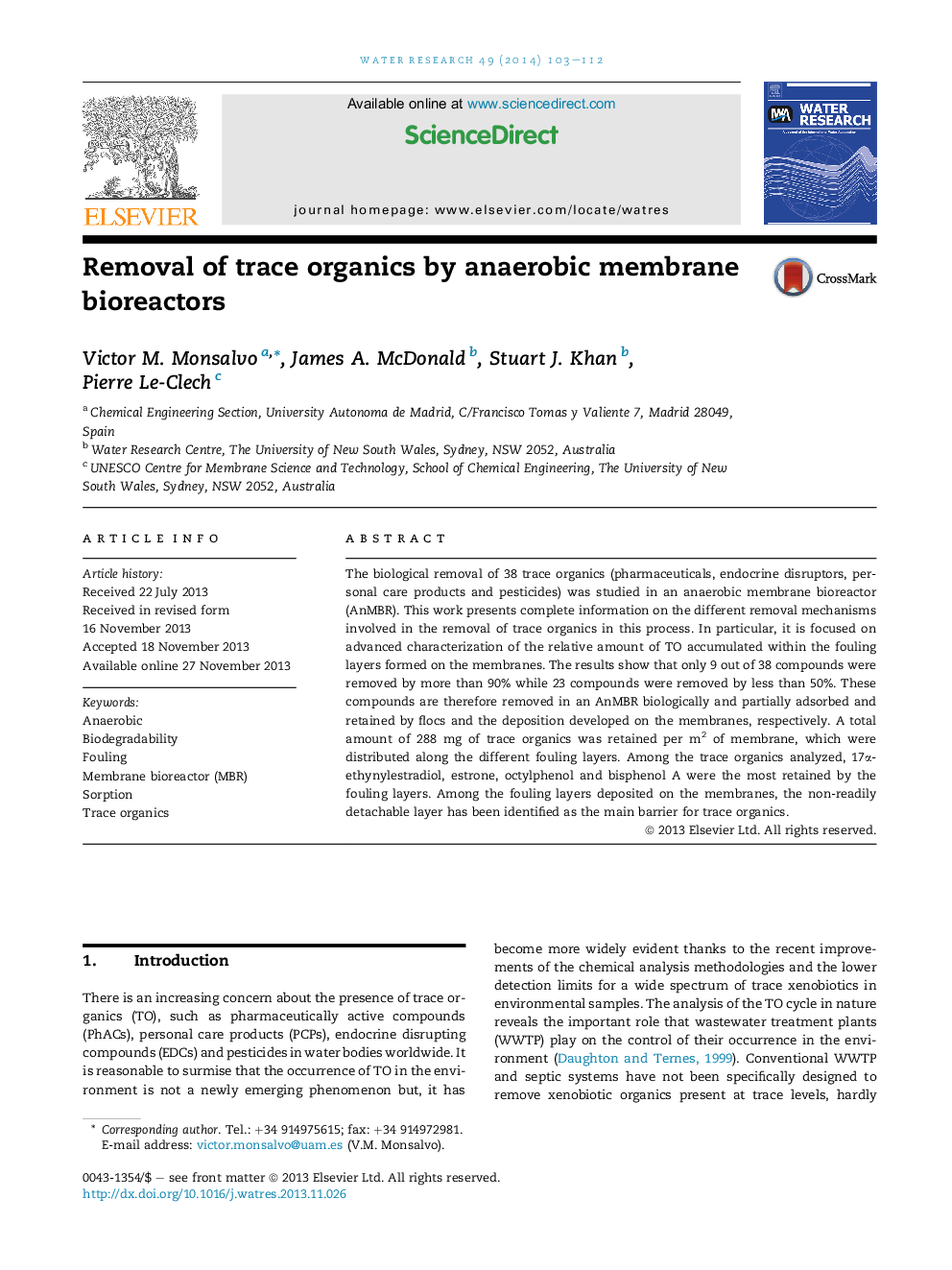| کد مقاله | کد نشریه | سال انتشار | مقاله انگلیسی | نسخه تمام متن |
|---|---|---|---|---|
| 4481694 | 1623119 | 2014 | 10 صفحه PDF | دانلود رایگان |
• Fate of micropollutants during their treatment in an anaerobic membrane bioreactor.
• The role of fouling layers in trace organics removal by an anaerobic MBR.
• TO are biodegraded and partially adsorbed and retained by flocs and fouling layers.
• Reversible bounded layer has been identified as the main barrier for trace organics.
The biological removal of 38 trace organics (pharmaceuticals, endocrine disruptors, personal care products and pesticides) was studied in an anaerobic membrane bioreactor (AnMBR). This work presents complete information on the different removal mechanisms involved in the removal of trace organics in this process. In particular, it is focused on advanced characterization of the relative amount of TO accumulated within the fouling layers formed on the membranes. The results show that only 9 out of 38 compounds were removed by more than 90% while 23 compounds were removed by less than 50%. These compounds are therefore removed in an AnMBR biologically and partially adsorbed and retained by flocs and the deposition developed on the membranes, respectively. A total amount of 288 mg of trace organics was retained per m2 of membrane, which were distributed along the different fouling layers. Among the trace organics analyzed, 17α-ethynylestradiol, estrone, octylphenol and bisphenol A were the most retained by the fouling layers. Among the fouling layers deposited on the membranes, the non-readily detachable layer has been identified as the main barrier for trace organics.
Figure optionsDownload high-quality image (131 K)Download as PowerPoint slide
Journal: Water Research - Volume 49, 1 February 2014, Pages 103–112
